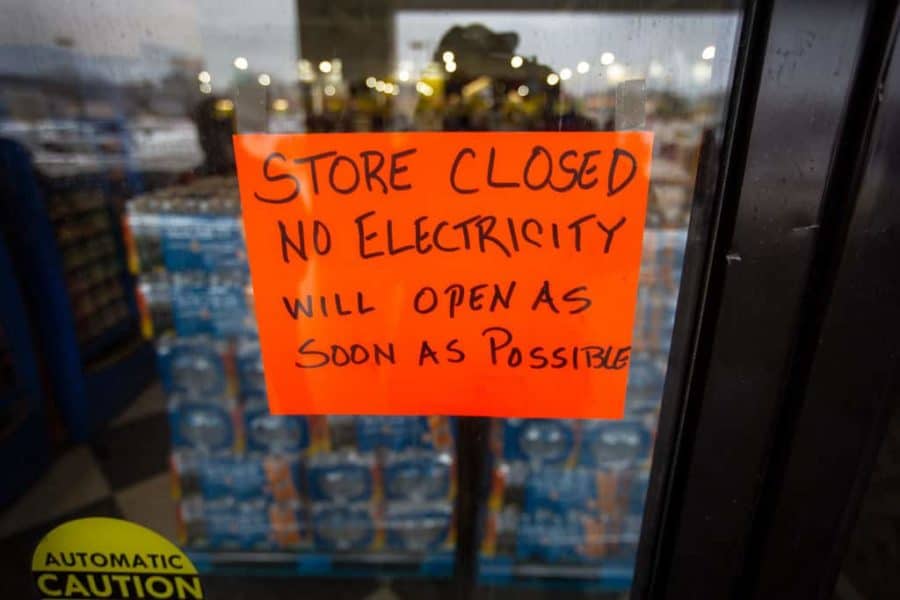Electric grids are an indispensable infrastructure, as evidenced this week by winter storms that have left an estimated 3 million Texans without power in dangerously cold temperatures.
The Electric Reliability Council of Texas, the electric grid operator for the state, lost control of the power supply this week, prompting Gov. Greg Abbott to launch an investigation, while residents and business owners across the state demanded accountability.
On Wednesday — the fourth day of the historic storm — officials continued rolling blackouts to avoid wider outages. Thomas Overbye, a Texas A&M University professor of electrical and computer engineering, says it’s the kind of rare event that the Smart Grid Center is focused on preparing the electric grid to handle.
“I think we unfortunately found out that the electric grid and the coupled natural gas infrastructure were not well prepared to deal with this rare but not unprecedented event,” said Overbye, the center’s director.
The extreme cold caused a large increase in usage of electric heating while at the same time many of the state’s natural gas-fired power plants were reportedly knocked offline. Many of the state’s wind turbines also froze amid the icy conditions.
ERCOT controls about 85 percent the state’s energy grid, which is operated independently from the rest of the country. While it’s designed to handle millions of people blasting their air conditioners during sweltering Texas summers, record-breaking cold weather pushed the grid to its breaking point.
The electric load on Sunday night was 69,000 megawatts. To put that in perspective, the all-time maximum for ERCOT set on a hot afternoon was 74,500 megawatts, Overbye said.
“Usually the electric load is a lot lower on the weekends than on weekdays, so to see 69,000 megawatts on a Sunday evening is unprecedented,” he said.

Another factor: Utilities like ERCOT forecast future demands to estimate the amount of generation resources that will be needed. They also schedule maintenance for generating plants. Overbye said in a month like February when sustained frigid temperatures aren’t usually expected, it would not be unusual for some generating plants to be offline for maintenance.
“At this point, of course the key is we want to get the generation back on quickly.” At the same time, he said, it’s important to understand that while ERCOT oversees operation of the power grid, the entity doesn’t own the assets.
On Tuesday, Gov. Abbott called for emergency reform of ERCOT, saying the operator “has been anything but reliable over the past 48 hours.”
“Probably where a lot of the investigation is going to focus on is, ‘How come so many plants failed to operate in these temperatures, especially given that reports following a February 2011 cold snap called for such winterization?’” Overbye said.
This directly relates to the Smart Grid Center’s focus of “future-proofing” the electric grid. Researchers at the center — which is a division of the Texas A&M Engineering Experiment Station and separate from the state and entities handling the power cuts — aim to find ways to make the grid more reliable and resilient.
“The idea is regardless of how the future evolves, we will have an electric grid that is prepared,” he said. “One of the things that we’re working on now is the advantages and potential problems with this coming synergy of electricity and transportation.”
As electric vehicles grow in popularity, one shortcoming will be the inability to charge a car in the event that there is no electricity. Answering the question of how to solve this problem in a reliable, resilient and equitable way is among the focuses of the center, which is a division of the Texas A&M Engineering Experiment Station.
Infrastructure like the electric grid can be hardened to deal with these low frequency, but high impact events. “As a society, we just have to decide how we want to deal with that cost,” Overbye said. “The Smart Grid Center is already addressing these sorts of issues.”
Another conversation that will likely result: the separation of Texas’ power grid from the rest of the country. Overbye said this has come with both advantages and drawbacks.
“If we had been interconnected for this particular event, we would have been able to bring in power from primarily the Eastern Interconnect, and that would have helped in this situation,” he said. “With being interconnected, the pluses are we could buy and sell electricity in a larger market, and we could also get and give help in times of need. Disadvantages are that blackouts or cascading events from elsewhere in the grid could come into Texas, and there certainly could be much more federal regulation.”
In addition to its research goals, the Smart Grid Center can also assist the state in developing a smarter and more resilient electric grid, he said.
“We’re certainly willing and have the expertise to help Texas and the rest of the country deal with electric grid issues, and can provide technical expertise to decision makers moving forward,” Overbye said.


